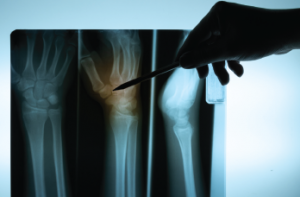
alice-photo / shutterstock.com
Imagine leaving the hospital after suffering a heart attack without being treated for hypertension or being started on a beta blocker. What would we think of the hospital where patients are never educated about the relationship between treating hypertension and reducing myocardial infarction and stroke risk?
Unfortunately, this happens every day with osteoporosis and fractures in health systems around the world. Just as the link between untreated hypertension and myocardial infarction is undeniable, so is the knowledge that osteoporosis leads to fractures. Given its high prevalence, the potential for high costs passed on to patients and the health system overall, and the availability of drugs to treat and prevent fractures, osteoporosis should be considered an enormous public health concern.
In the U.S. and Europe, it is estimated that approximately 30% of postmenopausal women have osteoporosis. Forty percent of these women will suffer at least one fragility fracture in their lifetime, and having an initial fragility fracture increases the risk of sustaining a new fracture by about 85%.1
Despite these astounding figures, diagnosis and treatment of osteoporosis remains low among physicians worldwide. As of 2016, the percentage of postmenopausal women being screened for osteoporosis in the U.S. was 41.9%, well below the national average for breast cancer screening (72.7%) and beta blocker treatment after a myocardial infarction (84.4%).2
Even after patients are admitted and treated for non-traumatic fragility fractures, the osteoporosis management rate remains very low. One retrospective study found that treatment was prescribed in only 44% of cases after a vertebral fracture and only 21% of cases after a proximal femur fracture.3
Rheumatology Initiatives in Fracture Liaison Services
The abysmal rate of treatment after the sentinel event of first osteoporotic fracture makes this an area ripe for improvement. A Fracture Liaison Service (FLS) is a means to improve secondary prevention of osteoporotic fractures. The National Osteoporosis Foundation (NOF) recognizes the FLS as a means to improve outcomes related to secondary prevention of fractures.4
Geisinger Health System (GHS) was one of the first health systems to develop an FLS in the U.S. The GHS High Risk Osteoporosis Clinic was developed in 1996. It is a program headed by the Division of Rheumatology and uses osteoporosis management guidelines to help improve osteoporosis diagnosis and treatment.5 GHS was able to decrease hip fracture rates, increase the number of patients who receive a dual-energy X-ray absorptiometry (DXA) scan and increase the number of patients who received treatment.5
